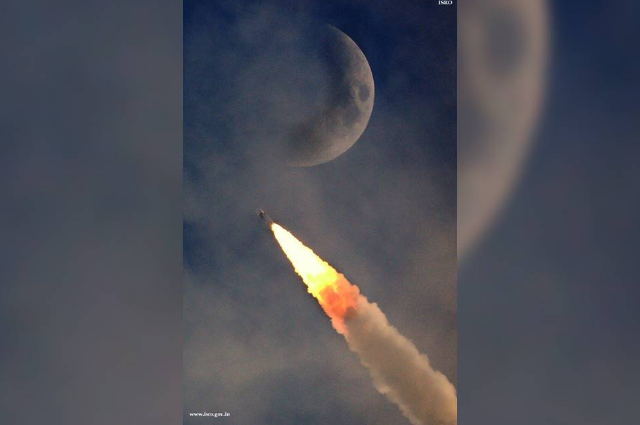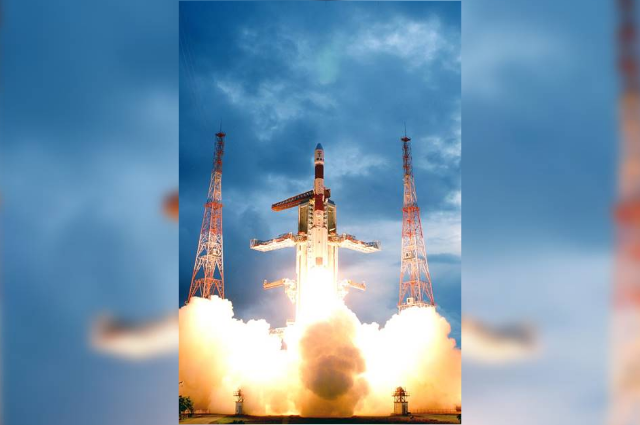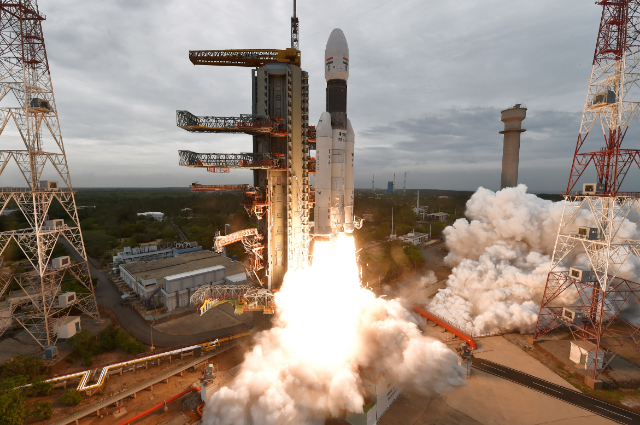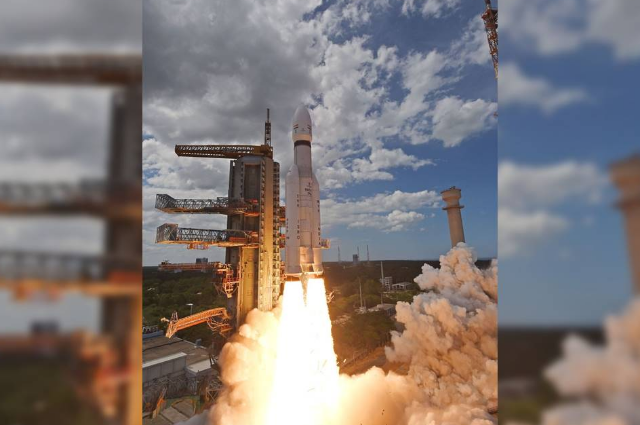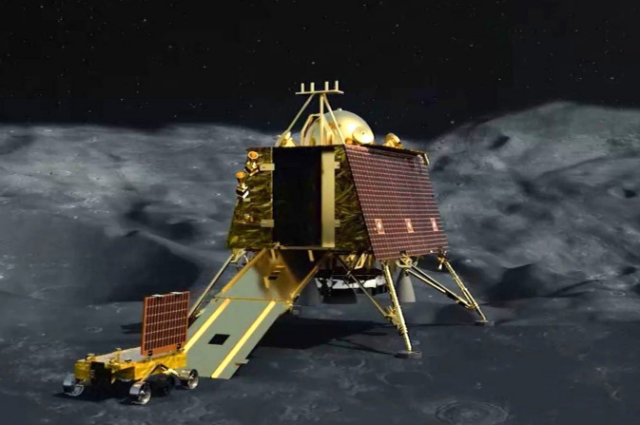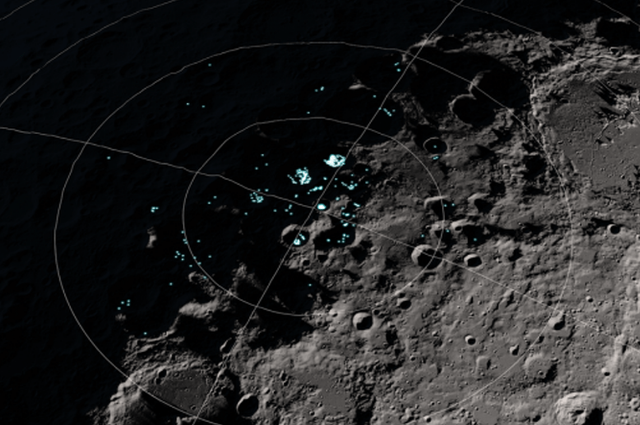The news that India’s latest part of the lunar mission, Chandrayaan-3, to be launched on 14th July 2023, from Sreeharikota, has been shown in the news lately. Several news articles and videos related to the mission are being covered every day. About this mission, two major questions are being put forward by people. The first question is, What is the history behind Chandrayaan? What happened in Chandrayaan-1 and 2?
What is going to happen in Chandrayaan-3? What features make it stand out from the other missions? These are the recurring questions Another major question has also arisen from this. The US, The Soviet Union, and China have already done a soft landing on the moon, and have also carried out several studies along with it. In such a situation,
How does India’s lunar mission stand out from its contemporaries? What are the special features of our current mission? This article will answer these two major questions.
Soft landing vs. Hard landing
Now, let us first try to understand more about Chandrayaan 3. The first thing we need to know is the difference between the words hard landing and soft landing. The soft landing or safe landing, is just as its name suggests. When we land a probe or a vehicle very softly or safely on the lunar surface, it’s called a soft landing. If we’re able to land safely like this, we will be able to carry out more experiments similar to this on the moon. Using the vehicle or the instruments inside,
We will be able to do various things on the lunar surface. That is what we call a safe landing or soft landing. Very slowly and safely the probe is landed on the surface. But in a hard landing, the vehicle very quickly crashes and lands on the surface. Now, if we look at the history of India’s lunar exploration, we can find 3 of them. Chandrayaan 1, Chandrayaan 2 and Chandrayaan 3.
Chandrayaan 1
The first one out of this, is the 2008, Chandrayaan 1. We can see that Chandrayaan 1, was one that of a hard landing. We are sending a vehicle to the moon, but that vehicle is crash landing. When the vehicle reaches the lunar orbit, as it is traversing the surface of the moon to crash, it collects maximum data and sends it back to Earth and we carry out further studies based on the information.
Chandrayaan 2
We crashed a moon impact probe on the surface of the moon as part of the 2008, Chandrayaan-1. After that, we had to wait for almost 10 years for India’s next lunar mission. That was Chandrayaan-2, which was launched in 2019. Chandrayaan-2 aimed to have a soft landing on the moon’s surface and to explore the surface in various ways. But, Chandrayaan-2 was a failure. So, here we have to try and understand what went wrong with Chandrayaan-2. Only then, we will be able to understand Chandrayaan-3.
What’s wrong writh chandrayaan 2
In Chandrayaan-2 there were mainly two parts. One is an orbiter. The function of the orbiter was to circle the moon The second way, is another part of this. There were two parts. Vikram- The lander and Pragyan – The rover. Vikram was named after Vikram Sarabhai, Pragyan was synonymous with knowledge. So, from the Earth, this rocket, lander, and rover were launched into the Earth’s orbit using a rocket. From there, step by step, it was launched into the moon’s orbit. When we say, step by step, please understand that it involves a lot of processes.
I’m not explaining it further. After the probe and orbit, reached the moon’s orbit, the orbit
And the Land Rover gets separated from each other.
Orbit will revolve around the moon, but the lander will slowly get down and have a soft landing on the moon’s surface. So, Vikram -The lander, softly lands on the moon’s surface. Pragyan-The Rover is placed inside Vikram. The rover gets out of Vikram and moves across the surface of the moon, collects a large amount of data, and carries out experiments. This was the mission of Chandrayaan-2. Here, we can see that the first few stages were done perfectly. All the required materials were first launched into the earth’s orbit Later they were launched into the moon’s orbit, and the orbiter and lander got separated from there. After that the orbiter starts to revolve around the moon and the lander slowly comes to the surface of the moon.
But, we can see that there is no sign of a soft landing. When Vikram-The lander gets down to the moon’s surface, it faces several issues
And encounters some technical software glitches. Due to this, the rover is unable to communicate with the research center in India. And they are unable to identify what went wrong with the rover. Later, with the help of NASA, we can find out that as part of the loss of communication, Vikram – The lander, instead of a soft landing, had crash-landed.
It crash-landed on the moon’s surface. It was later discovered that, as part of this malfunction, the lander and rover got destroyed. So, since it had crash landed instead of soft landing it can be seen that Chandrayaan -2 was unable to complete its mission successfully. But, Chandrayaan -2 cannot be considered as a complete failure. Because the orbiter had reached the moon’s orbit and successfully revolved around the moon it was predicted that it would continue revolving around it for 7 years.
Even now, it’s on the moon’s orbit and is communicating with us by handing over several important data. But, only if the aim of Chandrayaan-2, that is, to softly land on the moon’s surface and to conduct several experiments using Pragyan – The rover becomes successful, the mission can be considered a complete success. So, to have a follow-up of Chandrayaan-2 or to fulfill the aim that was left unfulfilled by Chandrayaan-2, our latest lunar mission, Chandrayaan-3 was put forward.
Chandrayaan 3
Now, let’s see what happened in Chandrayaan-3. So, in this, there are mainly three parts. The first part, we call it a propulsion module, The Second and third part, similar to Chandrayaan-2, consists of Vikram-The Lander and Pragyan-The Rover. We can see that there is no orbiter here. So, all these parts will be launched outside the different orbits of the earth from Sreeharikota in a GSLV Mk III rocket, in a step-by-step process. From there it is launched to the moon’s orbit.
Here, we can see that there's no orbiter. You must have understood, why it wasn’t part of Chandrayaan-3. The orbiter of Chandrayaan-2 is still functional Therefore, this propulsion module will take Vikram and Pragyan to an area 100 kilometres above the moon. From there, Vikram and Pragyan will separate from
The propulsion module same as in Chandrayaan-2 They will therefore, also have a soft landing on the earth’s surface as mentioned in Chandrayaan-2, after which Pragyan-The Rover will come out of the Lander and explore the surface of the moon. This is the aim of Chandrayaan-3.
Chandrayaan-3 was launched from the earth on July 23, on August 23, around 18.04 a.m. the soft landing took place according to the information given out. So, Chandrayaan-2 which had an investment of 610 Cr was a partial failure, it has become a combined goal of everyone to make Chandrayaan-3 a success. So, there have been several modifications, when it changes to Chandrayaan-3 from Chandrayaan-2. ISRO Chairman, S Somnath has stated that they have created a failure-based design for Chandrayaan-3. We need to carefully understand this news.
Why Chandrayaan 3 is different
At the time of Chandrayaan-2, it was termed a success-based design. This means, that for this project to be successful, they had concentrated only on the elements of success in the design that was needed for it to perfectly complete its course. But, in Chandrayaan-3 they researched the ways they could go wrong. They studied in depth about all the possibilities of a failure in connection to Chandrayaan-3 After studying in detail about all the possible failure outcomes, they designed Chandrayaan-3 accordingly. Which is why it is referred to as a failure-based design.
If we look at the example, the major reason for the failure of Chandrayaan-2 was that the area for its landing was very small. It was instructed to land on an area with 500m length and 500m width. If we consider the basic space expeditions, the area given was comparatively small. So, this time, the area was increased to 4 km in length and 2.5 km in width for landing.
It was a particular place to land safely. Additionally, in case of an adverse situation, arrangements have also been made for it to land in any other places within the large area. Also, to study the issues that may arise at the landing time of Vikram-The Lander, the assistance of helicopters and cranes was used to drop the models of the lander on all kinds of surfaces, in all possible ways to avoid failure.
Not just this, but in Chandrayaan-2 at the time of landing of the Lander, the maximum speed that could be absorbed by the lander was 2m/s. But, as it comes to Chandrayaan-3 it can be seen that the count has increased to 3 m/s. This means, that even if it lands at a speed much more than it was estimated, It can still have a safe landing. Along with it, Chandrayaan-3 didn’t need an orbiter. So, the space reduction contributed to optimal usage of fuel to ensure maximum safety. So, we can see here that several methods like these have been used in the failure-based design. It can be seen that there have been huge efforts from the creators to make this a 100% success on all terms as part of Chandrayaan-3.
Agenda of chandrayaan 3
Now, another major question arises.
Is the agenda of India and ISRO to create Chandrayaan-3 solely to become the 4th nation after the USA, Soviet Union, and China to accomplish a soft landing on the moon?
Or are there any additional improvements done to Chandrayaan-3 that make it stand out from the other missions? Of course, there is. Even though expeditions that are similar to this have been carried out on the surface of the moon, you should understand that, with successful landing of Chandrayaan-3, yielded more accomplishments compared to the other moon missions.
Landing of chandrayaan 3
To recognize that, we need to understand where Chandrayaan-3 landed. On the surface of the moon, towards 69.37 ° south latitude, the lander of Chandrayaan-3 has been decided to land Which means, if we understand geography correctly the lander landed in place close to the South pole. This place has a lot of specialties. We already know that several soft landings have taken place on the surface of the moon. But, all of them have taken place towards the middle. The farthest it has landed is about 40 ° south from the middle But, quite far from the usual points of landing, Chandrayaan-3 is set to land close to the south pole.
China’s Chang’e 4 and Israel’s space vehicle had tried to land near the south pole in earlier attempts but had failed miserably. That is to mean, the South Pole is the most difficult place to land on the moon. As you know, India became successful in accomplishing this feat and we became the first nation to land in the south pole region of the moon. But, Why is the South Pole of the moon considered the hardest place to land?
South Pole of the moon
One of the main reasons is the presence of large to small craters in the South Pole. It ranges from mere centimeters in diameter extending to almost several kilometers. Several areas that are high and low can also be seen there. Therefore soft landing is difficult in such an area. But, other factors make landing in the South Pole much harder than the reasons mentioned. It has been found that, since this place doesn’t receive any sunlight, it experiences very severe cold weather and darkness. If we look at the North and South poles of the Earth, Since, the Earth’s axis is tilted at 23.5 °, either one of the poles is always facing the sun, and the poles experience 6 months of daytime and 6 months of nighttime. But, the moon’s axis only has a tilt of 1.5 °. Since the degree of tilt of the moon's axis is very small, the North and South poles of the moon receive a very small amount of sunlight. Some areas don’t receive sunlight at all.
It is not a recent phenomenon. This has been continuing for decades. Therefore, these areas experience pitch darkness. Along with that, according to the statistics, the temperature in those areas is -230 °c. So, in these areas that experience extreme darkness and no visual aid, it’s indeed an extreme task to land the lander, It’s also very hard to run electrical equipment in a place that experiences extremely cold weather. We can see that these are the reasons why all the earlier attempts to land in this place have failed. This is indeed what makes this mission exciting and also why it is a milestone in India’s space research if it becomes successful in landing Chandrayaan-3 in this area.
Advantages of landing on the South Pole
Although the ISRO has put huge effort into making this mission a successful one, Since it’s considered the most difficult place to land, the ISRO chairman referred to the last 15 minutes of landing as 15 minutes of terror. Many might be pondering the thought of whether ISRO had decided to land in the most difficult place on the moon merely to achieve this milestone. But apart from that, if we can land successfully and carry out experiments and exploration in this area, it is the greatest contribution to the field of science. Because, if the moon’s surface has the presence of water in it, then it will be found in frozen form in this area.
Besides that, if there are certain objects to be found in this place, they can also be discovered in the form of ice. Therefore, if we can study these objects that have been lying here without any change for several decades in frozen form, we will be able to find proofs that will be able to give a proper explanation of the birth of the solar system.
Similarly, the South pole of the moon lies near the big crater, the South pole Aitken basin. If our rover can explore the areas inside this crater, it will be able to find the elements from the deepest crust or upper mantle of the moon, Through this, many discoveries of a huge value can be carried out, as claimed by the scientific world.
Conclusion
It’s not just about accomplishing the impossible feat of landing in the most difficult area to land, but you have to understand that, by doing so, this mission can provide invaluable contributions to the scientific world. So, I hope you understand the history of ISRO’s moon mission, Chandrayaan-1, 2 and how is Chandrayaan-3 different from the other two missions of ISRO, and how landing on the South Pole of the moon will enable Chandrayaan-3 to contribute to the scientific world.

